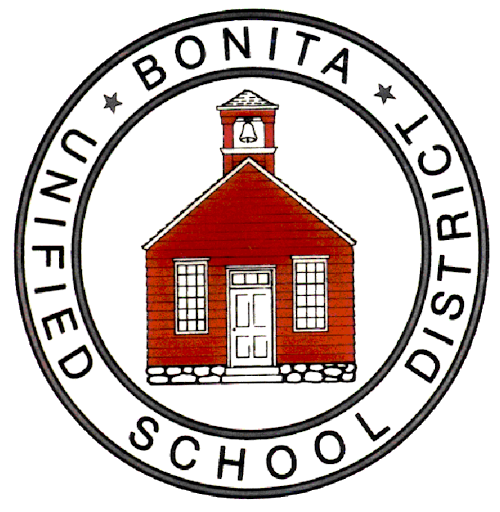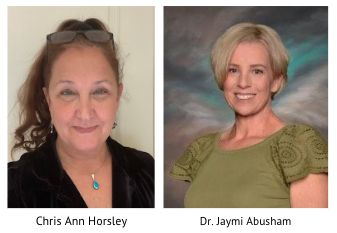
At Collaborative Classroom, we know relationships are fundamental to learning. Many of our most valued relationships are with our district partners. In this interview, we’re honored to feature one of these distinguished partners: Chris Ann Horsley, Senior Director of Elementary Curriculum for Bonita Unified School District (BUSD) in California.
Under Chris Ann’s leadership, SIPPS has become the district-adopted foundational skills program. (Read the research brief about the implementation.)
During this same time, BUSD has also been recognized for its excellence in reading comprehension and its commitment to reach all readers, receiving the number-one ranking on the California Reading Report Card.

As Chris Ann prepares to retire at the end of the 2021–22 school year, BUSD’s commitment to literacy advances as strongly as ever under the leadership of incoming Senior Director of Elementary Curriculum, Dr. Jaymi Abusham, and we look forward to continuing our partnership.
—Rachel Solis, Manager of Educational Partnerships
Tell us a little about yourself, your role at Bonita Unified, and what led you to implement SIPPS as the district’s foundational skills program.
I am Chris Ann Horsley, Senior Director of Elementary Curriculum for the Bonita Unified School District. I have been the curriculum director for five years. Before my current position, I was an elementary principal for 17 years at one of our elementary schools, Arma J. Shull Elementary in the city of San Dimas, California.
As an elementary principal and adjunct teacher for the University of La Verne, I was committed to finding and promoting the use of research-based programs in Shull Elementary’s classrooms.
I was told about SIPPS by my superintendent because it had been used successfully in his previous district. Being curious, I reached out to that district and found out more. Soon, we began using the program at Shull Elementary and our teachers saw that results on our formative assessments were improving faster and better than other schools’ scores.
What do you appreciate about SIPPS? How has SIPPS affected or changed your own teaching and learning?
What I appreciate about SIPPS is that it addresses all of the reading foundational skills in a sequential and effective manner.
Teachers can see results immediately with SIPPS, and they aren’t searching for different components in the curriculum, or trying to design effective teaching sequences on their own. Teachers, even with very little training, get results. And with good training and support, the student results are exemplary.
What I appreciate about SIPPS is that it addresses all of the reading foundational skills in a sequential and effective manner.
Though the eight elementary schools in my district have tried several other programs, no other program has given us the consistent results that we have achieved through using SIPPS Beginning, Extension, and Challenge in our K–3 classrooms.
What I have learned by using and training teachers on SIPPS is that a 20–40 minute a day lesson on foundational skills (phonemic awareness, site word and sound spelling pattern memorization, phonics, blending, spelling and writing with phonics, and reading) will teach reading to all children and, with increased repetition, it addresses the needs of students with dyslexia and other reading disabilities.
What have you noticed about your students’ learning and engagement as a result of implementing SIPPS?
Students love SIPPS. Because the program is differentiated, the lessons can be both a challenge and a way to show successful learning for all our students.
Students love SIPPS. Because the program is differentiated, the lessons can be both a challenge and a way to show successful learning for all our students.
For example, when teachers assumed that their accomplished early readers would be bored, they instead found that SIPPS filled unknown gaps and helped students become more fluent readers when they began reading multisyllabic words.
What advice or insights would you share with an educator who is new to SIPPS?
I would advise that teachers visit a school that is successful using SIPPS so that they can see all the happy faces of children using SIPPS and they can hear other teachers praise the program.
I have had teachers who have been teaching for many years start using the program and then share that they never really knew how to teach reading until they had experienced teaching SIPPS for a trimester.
You have worked hard to build capacity within Bonita Unified. What do you think has been the key to a strong implementation?
The key to strong implementation is twofold: Principals or curriculum directors must establish strong trusting relationships with teachers so that teachers are willing to look at shared data that show student results from (1) multiple classrooms using different programs, or (2) a single program like SIPPS with a variety of implementation modes.
When teachers are willing to compare their data to others and ask how they can improve their own student results, SIPPS, in my experience, will inevitably be the superior program.
Bonita has been highlighted by the California Reading Coalition as #1 on their Report Card, and your part in this success has been recognized by the district. As you close this chapter in your career and head off into retirement, what is it that you are most proud of?
I am certainly most proud that at Bonita we have been able to help many educators have successful teaching experiences and that we have been able to effectively teach many students to read.
Our district was recognized by the California Reading Coalition as having the highest third grade ELA CAASPP scores of economically disadvantaged Hispanic students in the state in 2018–19, the last year of statewide school testing before the pandemic.
Additionally, I am proud to have led Bonita’s Shull Elementary teachers and students to earning three California Gold Ribbon and Distinguished School awards, and the National Blue Ribbon School Award in 2012. This year, the school has again been nominated, and I am working with them on their application and preparation for state testing.
Lastly, earning the Reading Hero Award from the California Reading Coalition has been the capstone of the current school year!
I know that Bonita will always be a place that’s close to your heart. As you retire from the district at the end of the 2021–22 school year, what are you most excited to see happen at Bonita in the years to come?
I know that Bonita Unified’s commitment to literacy will continue to thrive under Jaymi’s caring and expert leadership in the years ahead, and I’m eager to see what comes next.
As you know, over the last five years, SIPPS has become the district-adopted foundational skills program in Bonita Unified. Looking ahead, it would be exciting to see the use of the program continue with more and more third grade teachers using SIPPS Challenge. The momentum is already there: we’ve trained inside trainers—intervention teachers—and have already discussed the yearly training of new teachers and paraeducators. Another hope is that in the future, Bonita’s K–2 team will have the opportunity to pilot Being a Reader as the Tier 1 reading curriculum.
At the end of the day, I am just so grateful to have worked alongside such committed and dedicated educators. Bonita is a special place and I’m proud of what we have collectively accomplished to serve our students.
***
To learn more about BUSD’s implementation of the SIPPS program, read the research brief Bonita Unified School District: Considering the Impact of the SIPPS Program on Improved Reading Achievement.
